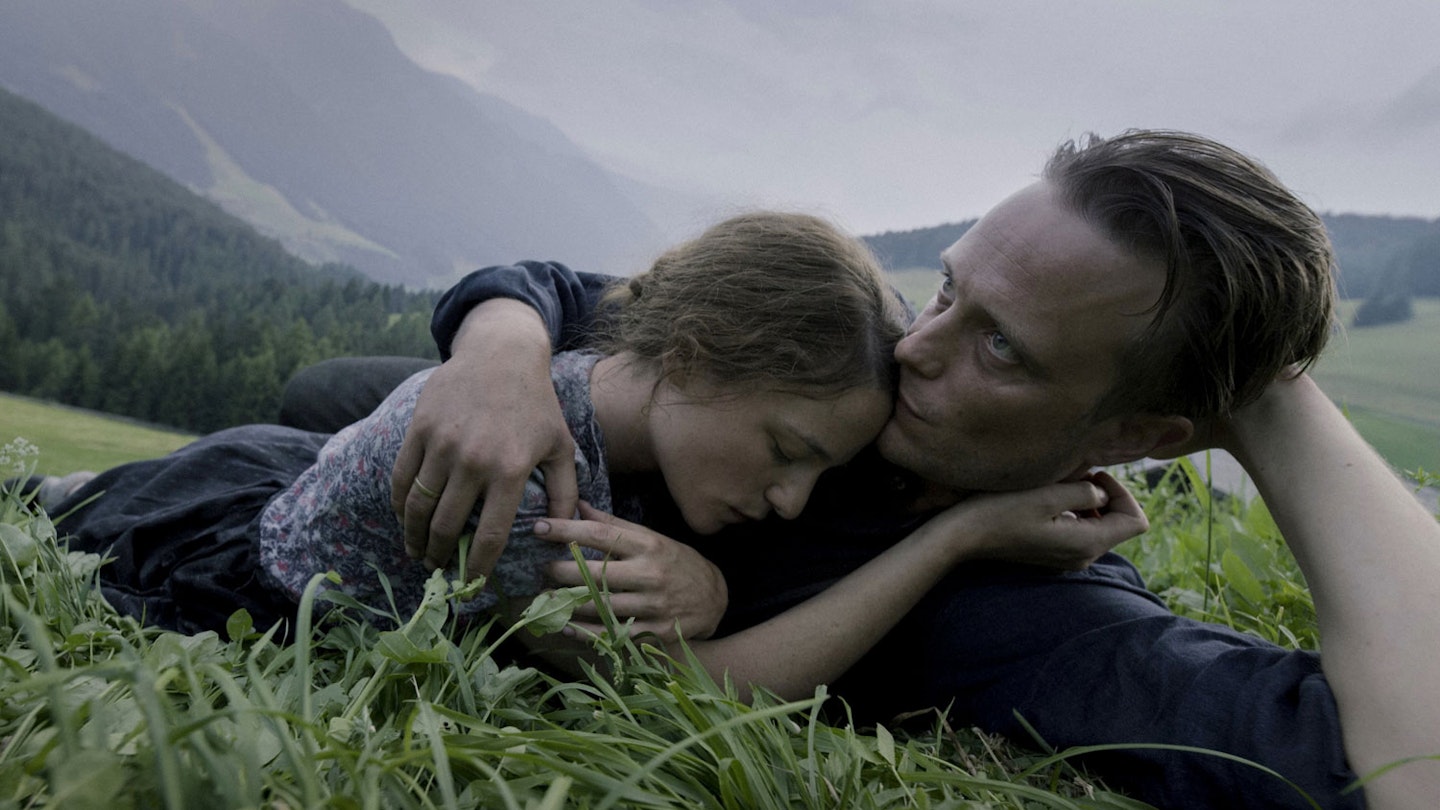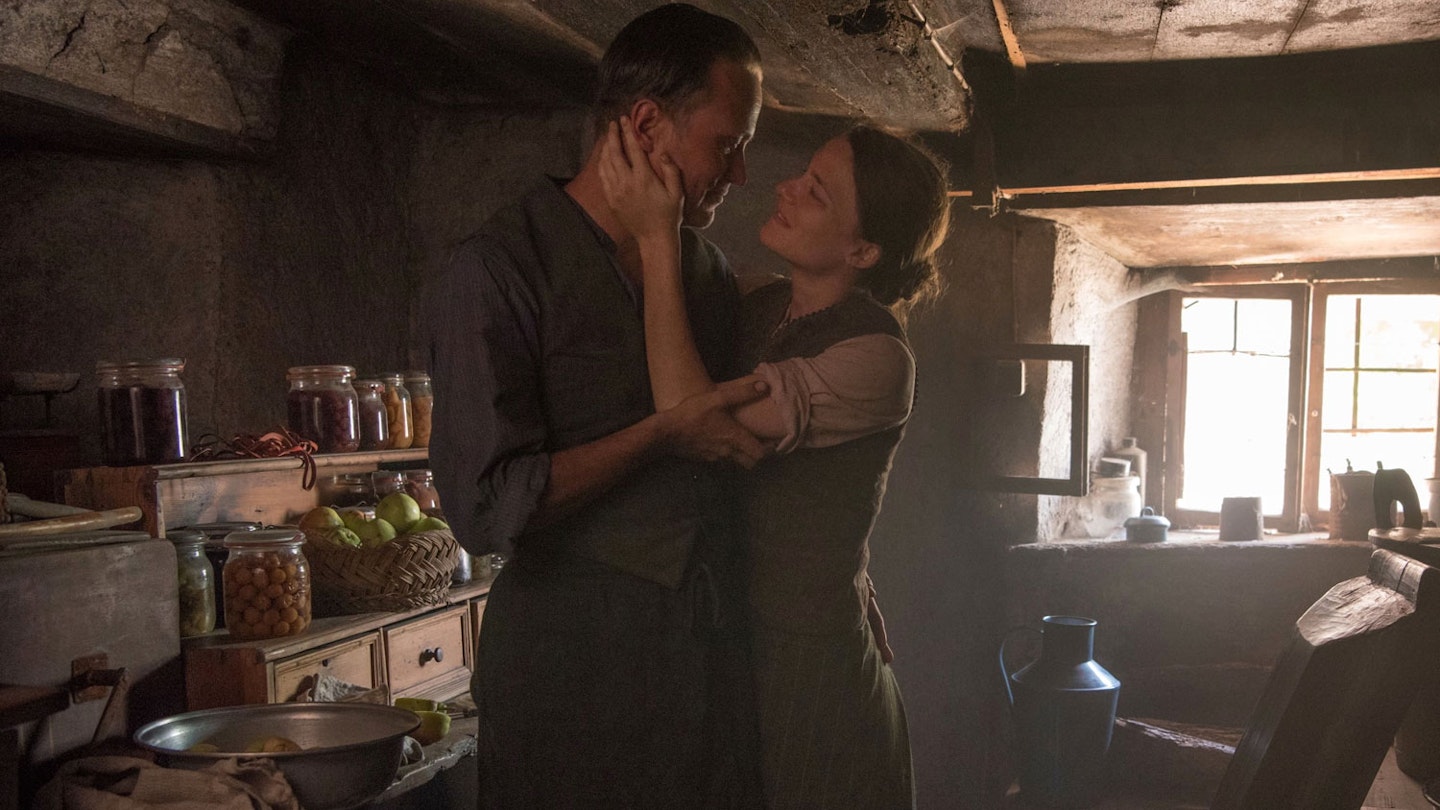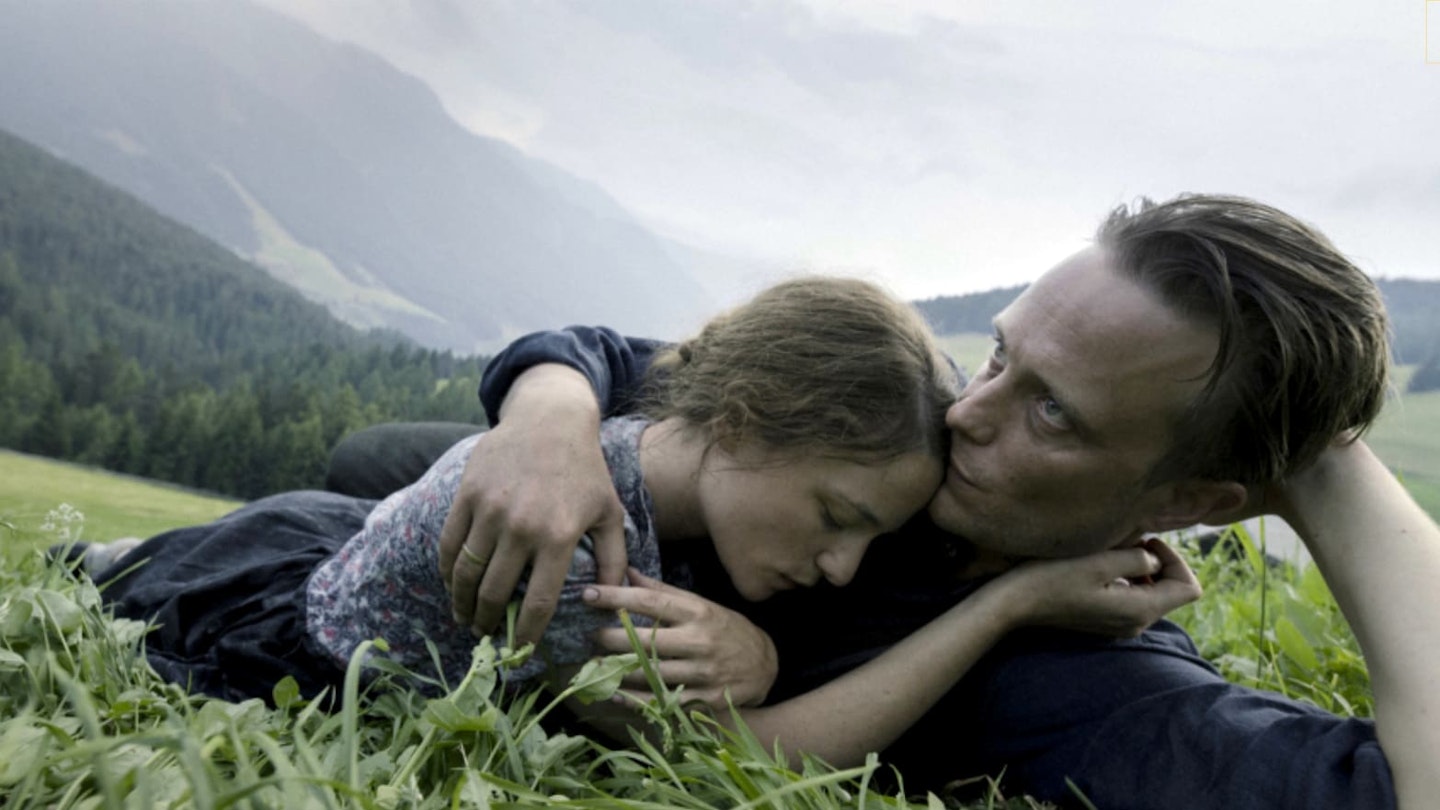There is a film buff theory that Terrence Malick makes his best work set in the past. From Badlands (set in 1959) and Days Of Heaven (1916) to The Thin Red Line (1942-’43), The New World (1607) and The Tree Of Life (’50s via the prehistoric era), there is something about Malick’s lyrical style and ambition to grapple with Big Themes that thrives in timeless period pieces. After mixed responses to his contemporary set-works (To The Wonder, Knight Of Cups, Song To Song), Malick is back on his historical bent telling the true story of a religious Austrian conscientious objector who chose prison over fighting for the Nazis. The result is the most engaged and urgent he has been for ages.

Set between 1939 and 1943, A Hidden Life centres on Franz Jägerstätter (Diehl), a farmer happily married to Fani (Valerie Pachner), picking wildflowers and playing games with his three daughters on a bucolic, very Malick-y Austrian hillside. Yet when Franz is forced to enlist in the German Army (he finds the military drills amusing), he refuses to swear his allegiance to Hitler, making him an outcast in his small community (kids pelt his daughters with mud) and putting him in prison facing potential execution. Malick’s screenplay uses Franz’s predicament to explore the dynamic between religion and faith, highlighting the failure of the institution who consistently tell him to give in. This is in contrast to the unwavering support of Fani (an excellent Pachner) whatever the consequences.
When Malick leans into the Christ parallels in the story, Diehl always keeps Franz human and grounded.
Where there has been an airy-fairyness to his recent work, here it is rooted in a real world of moral turpitude. Much of this is down to Diehl’s performance as a man defined as much by what he doesn’t do as what he does. Without resorting to dialogue, Diehl conveys untapped reservoirs of doubt and torment over what his principles mean for his family. When, in the second half, Malick leans into the Christ parallels in the story, Diehl always keeps Franz human and grounded.
Employing a new cinematographer, Jörg Widmer, who had previously worked with Malick as a camera operator, the film’s striking rustic look is defined by a use of natural light, the imagery flitting between the float-y giddy quality of The Tree Of Life and static misty vistas of the Austrian hillsides that remain impervious to the machinations of humans. All of Malick’s divisive filmmaking tics — multiple voiceovers (taken from Franz and Fani’s letters), an obsession with nature, a spiritually severe tone, a hefty running time that is Malick’s longest to date — are all present and correct, but here they are allied to a more surefooted sense of narrative and purpose. If Malick’s contemporary-set films felt like they took place in a high-minded bubble, here he uses history lessons to shine a light on today. “If our leaders are evil,” asks Franz, “what are we to do?” It’s a good question, and perhaps in 2020 the only question.

